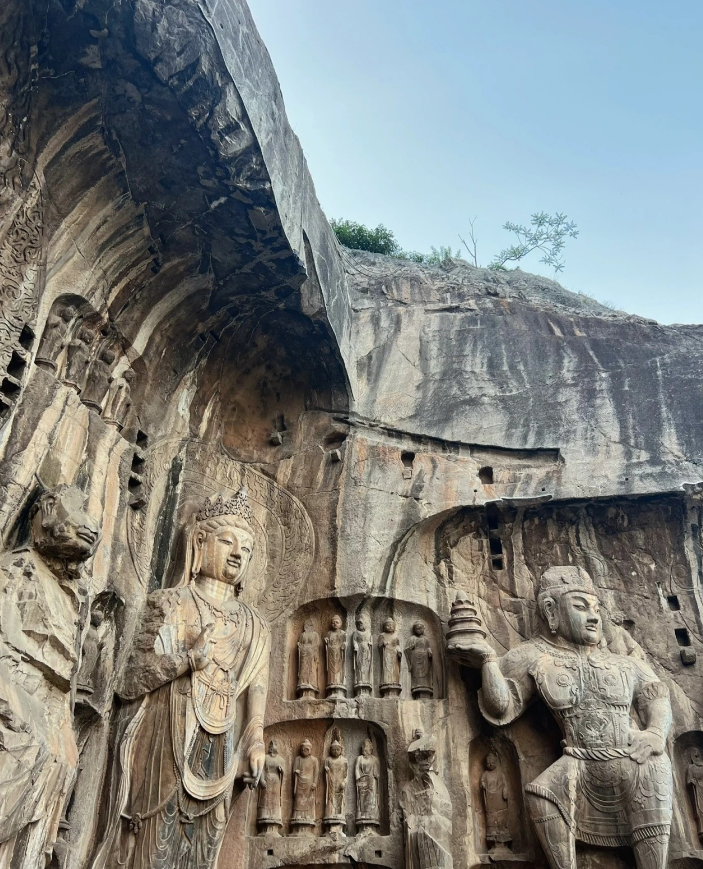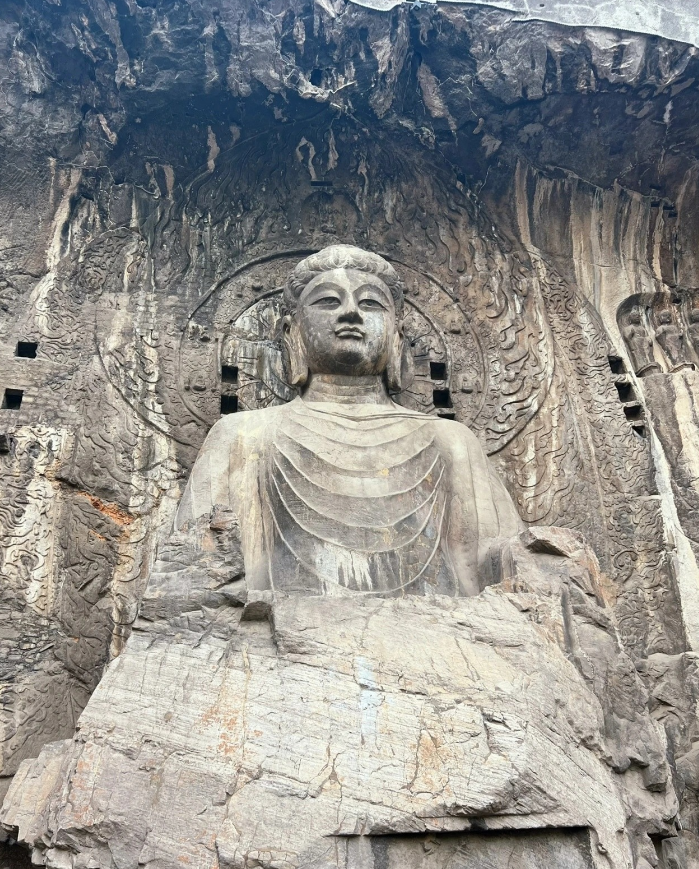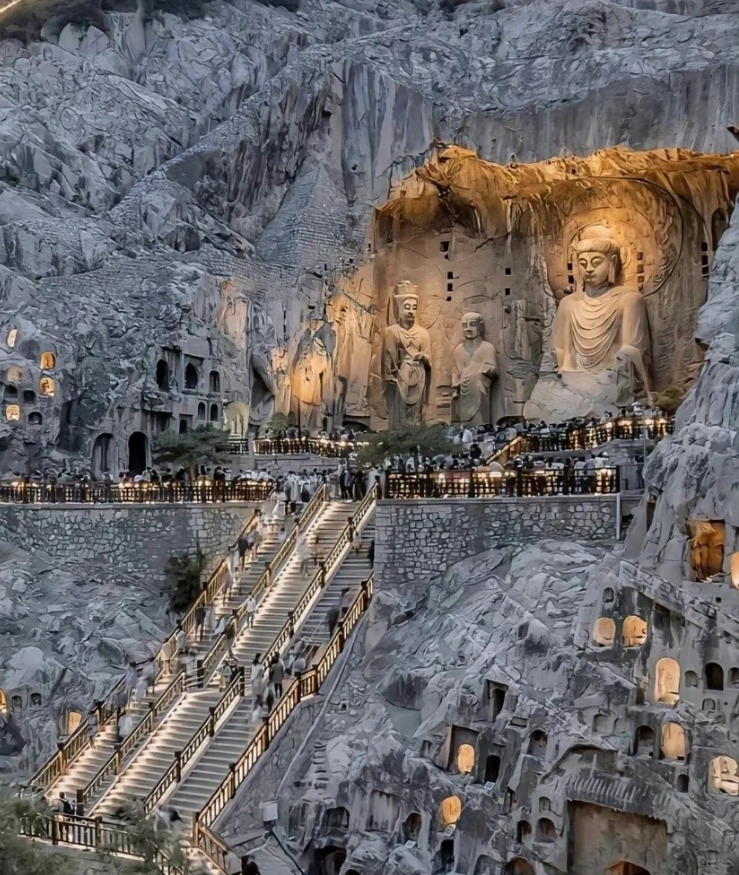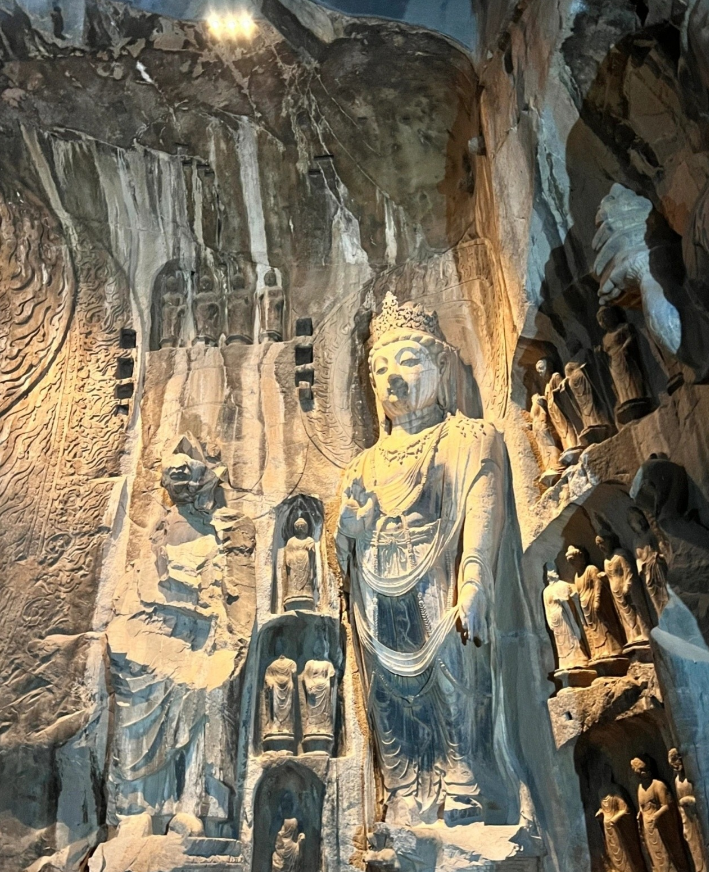Longmen Grottoes, the first of the four major grottoes in China Has a history of 1500 years
Nestled along the banks of the Yi River in Henan province, China, the Longmen Grottoes stand as a testament to the rich cultural heritage and artistic prowess of ancient China. Known as the first of the four major grottoes in the country, the Longmen Grottoes have a remarkable history spanning 1,500 years.
Dating back to the Northern Wei Dynasty (386-534 AD), the construction of the Longmen Grottoes began under the patronage of Emperor Xiaowen. Over the centuries that followed, successive emperors and rulers contributed to the expansion and embellishment of these magnificent rock-cut caves, creating an awe-inspiring complex of sculptures, statues, and inscriptions.
The Longmen Grottoes boast over 2,300 caves and niches, containing more than 110,000 Buddhist stone statues, 60 stupas, and 2,800 inscriptions. These masterpieces of ancient Chinese art were meticulously carved into the limestone cliffs, creating an ethereal sanctuary of spiritual significance and aesthetic beauty.
The grottoes are divided into three main sections: the northern, central, and southern areas. Each area exhibits distinct artistic styles and influences from different dynasties. The statues and reliefs range from small, delicate carvings to large-scale monumental figures, depicting Buddhist deities, bodhisattvas, disciples, and historical figures.
The craftsmanship and artistic finesse displayed in the Longmen Grottoes are awe-inspiring. The intricate details, delicate facial expressions, and flowing robes of the sculptures demonstrate the mastery of the ancient artisans. The grottoes also showcase the evolution of Chinese Buddhist art, from the earlier Northern Wei style to the more refined and naturalistic Tang Dynasty style.
In addition to the remarkable sculptures, the Longmen Grottoes also house a vast collection of inscriptions, providing valuable historical and cultural insights. These inscriptions, written in various scripts and languages, including Chinese, Sanskrit, and even Old Turkic, offer glimpses into the religious, political, and social aspects of the time.
Over the centuries, the Longmen Grottoes have endured natural disasters, wars, and human-induced damages. Yet, their enduring spirit and magnificence have persevered. In recognition of their cultural significance, the grottoes were listed as a UNESCO World Heritage site in 2000, ensuring their preservation for future generations to appreciate and admire.
Visiting the Longmen Grottoes is a journey into the heart of ancient China. As visitors stroll along the stone paths, flanked by towering cliffs and serene landscapes, they can immerse themselves in the grandeur of the past. The interplay of light and shadow, the whispers of history, and the sheer magnitude of the site create an atmosphere of reverence and wonder.
The Longmen Grottoes continue to inspire scholars, artists, and travelers from around the world. They serve as a testament to the artistic achievements and cultural legacy of ancient China. As we marvel at the intricate carvings and contemplate the stories they hold, we gain a deeper appreciation for the profound impact of Buddhism and the enduring beauty of human creativity.
The Longmen Grottoes stand not only as a remarkable architectural and artistic achievement but also as a bridge between the past and the present. They remind us of the rich tapestry of Chinese history and the importance of preserving and cherishing our cultural heritage.
Hits: 0










